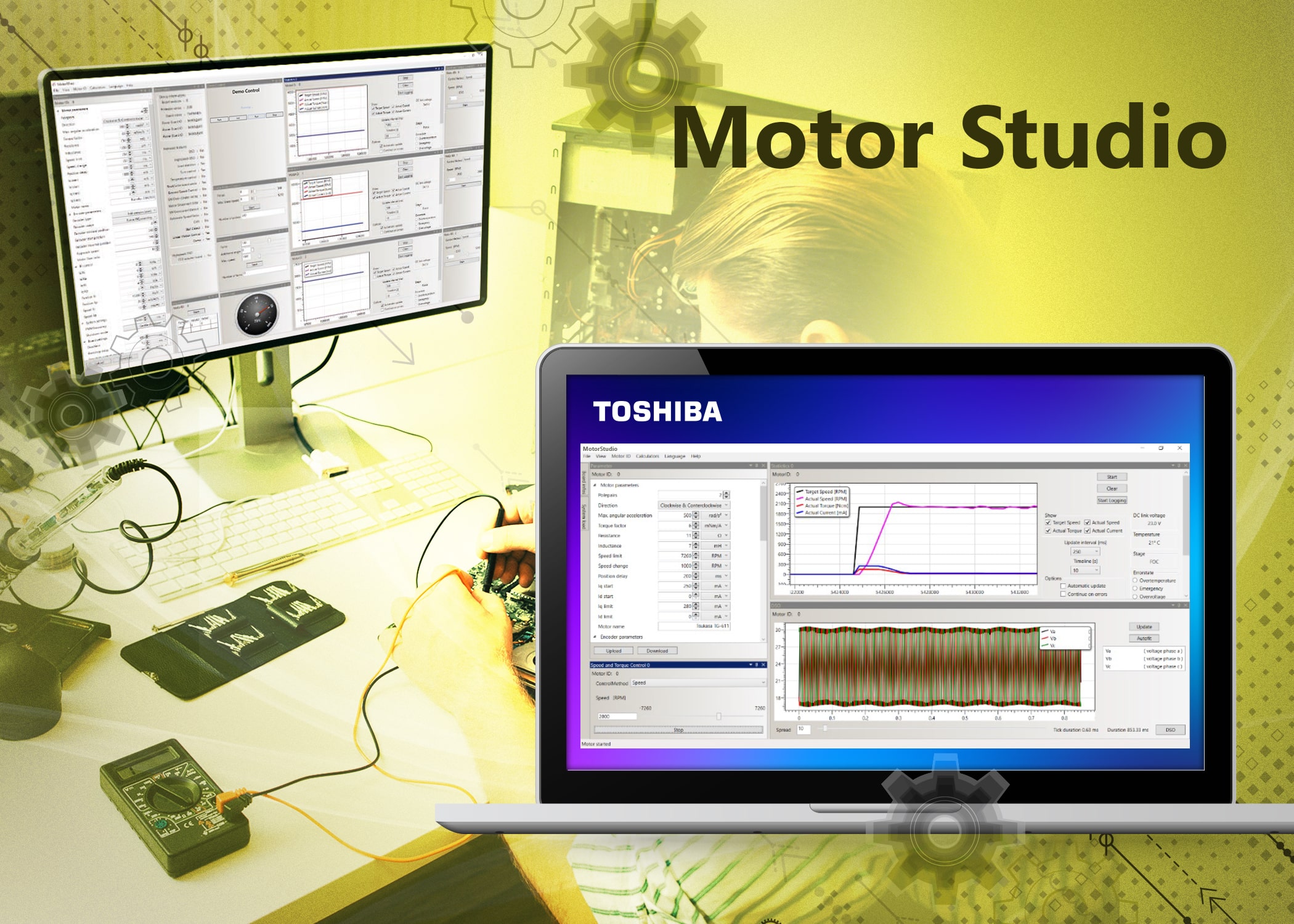Toshiba simplifies motor control with new software and hardware ecosystem
3rd November 2022

Toshiba Electronics Europe GmbH (“Toshiba”) has introduced MCU Motor Studio, bringing together PC-based design tools, microcontroller firmware, and low-cost evaluation hardware to accelerate time to market for motor-control applications hosted on Toshiba TXZ+™4A microcontrollers (MCUs).
The new MCU Motor Studio firmware suite supports all common energy-efficient motor control strategies including sinewave commutation and field-oriented (vector) control (FOC), sensorless or with precise-position sensing. There is a choice of single-shunt and three-shunt current detection, and support for PWM frequencies up to 156kHz. The firmware caters for all popular motor types, including brushless DC (BLDC) and permanent-magnet synchronous motors (PMSM). Switched reluctance motors (SRM) and asynchronous AC motors are also supported.
Users can control up to three independent motor channels with a single MCU, depending on the variant selected. The TXZ+™4A Series, based on the Arm® Cortex®-M4 core, comprises the M4K and M4M Groups, which enable motor control even with low-cost 64-pin MCUs. Dedicated motor-control features provided on-chip include a hardware vector engine, high-resolution advanced encoder for servo motors, and self-diagnostics that simplify meeting functional-safety standards such as IEC 60730 class B.
The firmware suite provides selectable functionality that lets users quickly configure controls such as zero-current-point detection, initial motor-position detection, and commonly used stop controls including rapid braking. Further functions include magnetic-field stall recovery, load-dependent speed reduction, advanced rotor control with sensorless precise positioning, and linear motion control with sensor-based precise positioning.
The companion PC-based motor-control tool helps users quickly configure the proportional-integral (PI) controller, enter the parameters of their chosen inverter board and motor, and start evaluating the solution. The tool graphically displays target and actual speed, torque, current, temperature, and DC-link voltage measurements, and monitors error status, all in real-time. Users can change the motor, system, and control parameters dynamically and can program tests to be executed automatically.
To help users kickstart their projects, Toshiba has worked with MikroElektronika to create the MIKROE Clicker 4 for TMPM4K evaluation board and a companion 6V-48V inverter shield. Together, they provide a low-cost development-hardware platform suitable for controlling one motor channel. The evaluation board contains a M4K MCU and can be powered from a USB port, a battery, or from the inverter board, which has its own switched-mode converter. The inverter allows one-shunt or three-shunt current measurement and has a flexible interface for the user’s preferred position sensing.